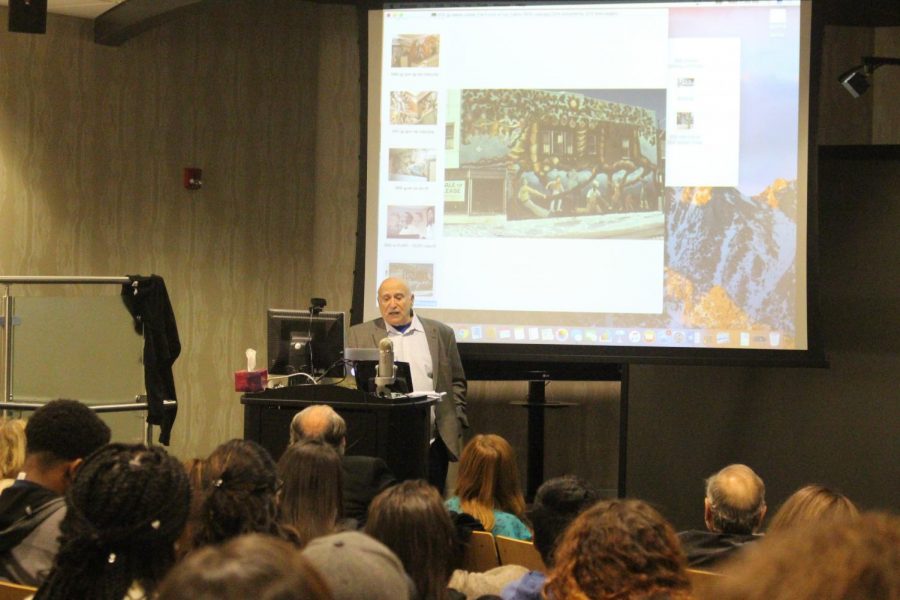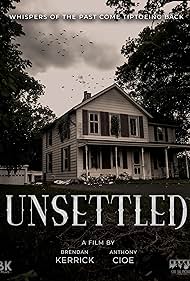Lecture explores Midwestern Mexican art
Marc Zimmerman, professor emeritus from the University of Illinois at Chicago and University of Houston, tells about the influence of Mexican art in Chicago and Hammond.
During the CHESS series lecture on Nov. 29, Marc Zimmerman, professor emeritus from the University of Illinois at Chicago and University of Houston, discussed the history of Mexican art in Chicago, Illinois and Hammond, Indiana.
Zimmerman said the first Mexican population came to the Indiana border and south Chicago in the 1920s and 1930s. Mexicans immigrated to Chicago during the Cristero War in Mexico, a rebellion against secular Mexican government policies. They entered 18th Street, known as Pilsen, the main neighborhood of lower west side Chicago.
Zimmerman said during this time, Mexicans did not show strong opposition even as they were exploited.
“Many were hired in the 1920s and 1930s as ‘scabs’ to the growing labor unrest and the fear of African Americans joining the steel mills and other places,” Zimmerman said.
Zimmerman said this changed in the 1960s and the 1970s with a militant Mexican community developing. Artists also emerged, like Ana Castillo, a Chicana novelist from Chicago and visual artist. Zimmerman related the atmosphere of the time with Castillo’s quote.
“‘The fires of the Latino movement burned throughout the Midwest. In Chicago, much of barrio youth was ignited and became caught up with this unprecedented spirit,’” Zimmerman quoted, “‘I now saw myself not as one more Mexican in the multitude, but as part of a major historical shift.’”
Zimmerman spoke about other artists that emerged. One artist was Felicita Nunez, the first woman to paint the first Chicano mural. Others were Jose Guerrero, a cartoonist who collaborated with others to create murals of people’s struggles and Ray Paltan, who maintained the spiritual Mexican identity in his artwork, imposing cultural nationalism in the community.
Other artists were Marcos Raya and Jose Gamaliel Gonzalez. Raya recreated artwork of Diego Rivera, a famous Mexican painter, and was the most famous Mexican studio and gallery artist. Gonzalez was a muralist and activist from Hammond and a good friend of Zimmerman.
“He [Gonzalez] sacrificed his own artistic vent and productivity to promote other artists,” Zimmerman said.
Gonzalez attended Notre Dame University and was involved in bringing Chicano art there. Gonzalez then went back to Hammond and painted murals. He then founded Movimiento Artistico Chicano meaning Chicano Artist Movement, a militant Chicano art group in Chicago. He gathered artists to do city artwork and did a mural called “Raza de Oro,” or “The Golden Rays.” In the mural, there are images of indigenous Mexican tribes and Aztlan, mythical homeland of the AztecsMexica. These images are still in a project on Hubbard St., Chicago.
Zimmerman said Latino artists expressed concerns and visions to address exploitations, deprivation, and disrespect experienced.
“The painters painted counter-narratives on as many walls as they could. Most of them were not interested in living some long and lost mythologized Latin American past, or alienated gentrified Latino future, even though this emerged,” Zimmerman said. “The question of gentrification was one of the major themes propelling this artistic expression, but they were seeking some third space of creativity and freedom in politics, work, and everyday life, and ultimately the questions of sexual preference and gender.”
Zimmerman said gentrification began in the 2000s and still continues. He said Pilsen has visual indications that make one feel like he or she is in Mexico, but may change because of gentrification.
Nicole Carmona, junior visual communication major, said the lecture was important because it was promoting awareness and understanding of Mexican culture.
“It’s important to have recognition because of the positive contributions the Hispanic community have made in the United States,” Carmona said. “Latino art is important to recognize as well because of the meaning behind each art piece.”
Zimmerman also spoke about modern Mexican artists in Chicago: Esperanza Gama and Diana Solis.
Gama specializes in textured artwork with social content. Solis does cartoonish figures representing different Mexican aspects and is working on a mural project assigned by Rahm Emanuel, mayor of Chicago.
Other modern Mexican artists are Nicole Martin, Maria Gaspar, and Sam Kirk.
Martin conducted a project titled, “A Day Without a Mural,” covering all murals in Chicago. Gaspar is an assistant professor at the School of the Art Institute of Chicago and wants to paint a mural on the Cook County prison wall with the prisoners. Kirk is a Mexican Puerto Rican artist, who has done image restoration and an art piece in Pilsen titled “Weaving Cultures.”



